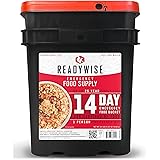Can I be Fully Self-Reliant While Living in an Urban Area?
- Urban self-reliance strategies
- Growing food in limited spaces
- Accessing off-grid resources
- Building community connections
Urban self-reliance strategies
Assessing Your Urban Space
When I first started exploring self-reliance in the city, it was crucial to recognize that not all urban areas are created equal. Each block, park, and rooftop has its own potential. I took a deep dive into my local environment, scouting for little patches where I could grow herbs or set up a compost bin. Even the tiniest balcony can become a mini-garden if you put in the effort.
Next, I started to think about function versus space. For example, I learned the art of vertical gardening, which allowed me to maximize my limited square footage. Simple shelves or wall-mounted planters can make a world of difference. Trust me, the more you get to know your space, the more possibilities you’ll discover.
Planning is also essential. I began mapping out what I wanted, creating a little vision board to chart my progress. Having clear goals kept me motivated and gave me direction, which is vital when you’re trying to carve a self-reliant path in the urban jungle.
Utilizing Public Resources
Cities often boast hidden treasures when it comes to community resources. I started checking out local community gardens, food co-ops, and farmers markets. These places not only offer fresh produce but also a sense of togetherness that can be hard to find in urban life. Building relationships with local farmers and other urban homesteaders has been incredibly rewarding.
Another amazing resource I found were workshops offered by local organizations. Tapping into the knowledge of skilled individuals has taught me invaluable skills, from preserving fruits and veggies to basic carpentry. You’d be surprised at how many free or low-cost resources are out there, just waiting for folks to take advantage of them!
Finally, don’t overlook your library. It’s a goldmine of information on everything from canning to sustainable living. I’ve checked out countless books that have helped me strategize my self-reliance journey. It’s all about digging into what’s available and using it to your advantage.
== > What if ... Get a FREE Subscription to PREPARE
Embracing Minimalism
One of the most liberating aspects of pursuing self-reliance in an urban setting has been embracing minimalism. Letting go of excess stuff has opened up not only physical space but also mental space. I gradually started decluttering my home, focusing on only keeping items that serve a purpose or spark joy.
This minimalist mindset has extended beyond my belongings to my lifestyle choices as well. Choosing to invest in experiences over things has left me feeling fulfilled without the need for constant shopping trips. Plus, it’s an excellent way to save money that can instead go towards things that enhance self-sufficiency, like tools for gardening.
Don’t be afraid to make tough decisions about what truly matters to you. For me, that meant learning to live with less while still feeling abundant. It’s a learning process, and I’m still figuring it out, but the journey has been eye-opening.
Growing food in limited spaces
Container Gardening
Growing your own food may feel daunting in a concrete jungle, but container gardening has been a game-changer for me. I found that almost anything can be grown in pots, from tomatoes to lettuce. Plus, there’s something so satisfying about nurturing your own plants.
Start with what you love to eat. I’ve experimented with different plants and figured out what grows best in my environment. The local climate plays a significant role, so pay attention to what thrives. The key is to start small and gradually expand as you gain confidence.
I also got crafty with my containers—old buckets, wooden crates, and even repurposed plastic containers can easily become planters. It’s a budget-friendly way to dive into the world of growing your own food while also recycling, which feels pretty awesome.
Vertical Gardening Techniques
If you’re short on space like I was, vertical gardening could be the answer. I’ve seen incredible transformations where people utilize wall space and fences to create stunning gardens. Wall planters, hanging pots, and even vertical trellises can turn an ordinary wall into a lush garden oasis.
One thing I’ve learned is that the choice of plants is crucial. Herbs, strawberries, and peas are some of the best candidates for vertical gardening. They’re easy to maintain and can produce a bounty even in a compact area. I’ve developed a mini herb garden on my kitchen wall, and nothing beats cooking with freshly picked basil or cilantro!
Lastly, don’t forget to make it visually appealing. Using colorful pots or arranging plants in a way that catches the eye can transform your space energetically. Living in an urban area doesn’t mean you have to sacrifice beauty for practicality; you can have both.
Serviceable Gardening Techniques
I’ve found that learning efficient gardening techniques is absolutely key when you’re trying to grow food in the city. Techniques such as companion planting not only enhance plant growth but can also help deter pests naturally. This means less hassle and more delicious veggies!
I also focused on creating soil health. I began composting my kitchen scraps and garden waste, which not only reduces waste but also enriches the soil, making it a win-win. Finding creative methods to keep plants nourished without running to the store felt like a small victory.
Lastly, being aware of urban pests was a learning curve for me. I discovered ways to coexist with city critters by using barriers and natural deterrents. The more I learned, the more empowered I felt, and my little garden flourished.
Accessing off-grid resources
Harnessing Solar Power
The thought of using solar power felt intimidating at first, but I decided to give it a shot! I started small, investing in portable solar chargers and LED lights. These little gadgets helped reduce my electricity bills and provided me with some peace of mind during those pesky brownouts.
I eventually jumped into the world of solar panels. After some thorough research, I found a cost-effective solution that has genuinely empowered my self-reliant journey. Now I can charge my devices and run small appliances using sunlight. It’s incredible how much energy you can harness if you put your mind to it!
Remember, it doesn’t have to be a massive upfront investment. You can gradually build your energy system as your budget allows. Start with what you can afford and watch your energy independence grow over time.
Rainwater Harvesting
Collecting rainwater may sound a bit rustic, but trust me, it’s super useful! I found that investing in a rain barrel was a straightforward way to make the most of nature’s resources. Not only does it save me money on my water bill, but it also allows for efficient gardening irrigation.
Connecting the barrel to your gutters is a must, but if that feels too technical, simply placing a barrel under your balcony can work perfectly. Simple modifications can lead to effective water harvesting, and every drop counts when you’re striving for self-reliance.
Learning how to purify rainwater was another empowering step. With a basic filtration system, I could ensure the water collected was safe for my plants, making me feel like a true urban homesteader.
Using Public Transportation Wisely
One way I found to reduce my reliance on personal vehicles was embracing public transportation. Not only does it save money, but it’s also environmentally friendly. I began researching the best routes and times to travel, which has made life so much easier!
Another pro tip I’ve learned is to plan trips strategically. Combine errands to avoid unnecessary travel and save time. It’s all about being deliberate in your planning and utilizing public transportation to its fullest potential to maximize efficiency.
I even started considering biking as an option for shorter trips. It’s a fantastic way to combine exercise and transportation, contributing to my self-reliance journey while keeping me healthy.
Building community connections
Networking with Like-minded Individuals
One of the best parts of this whole self-reliance journey has been connecting with others in my community who share similar goals. I’ve joined local homesteading groups, attended workshops, and connected on social media platforms.
These interactions have provided an incredible wealth of knowledge and support. Sharing tips, resources, and encouragement has made all the difference during tough times. Plus, there’s a real sense of camaraderie; it’s reassuring to know I’m not navigating this path alone.
Don’t underestimate the power of word-of-mouth. I’ve discovered many incredible local resources simply because someone shared information over coffee. It’s like community magic!
Participation in Local Initiatives
Participating in local initiatives has been another way I’ve strengthened my community ties. Whether it’s volunteering at urban farms or helping with community repairs, being active in your neighborhood creates connections that help foster resilience.
Local events often have a wealth of knowledge available, so I always keep my ears peeled for workshops or events. Learning from others enhances my skillset and offers an opportunity to forge friendships with fellow urban self-reliance enthusiasts.
Plus, being part of a collective effort contributes to rebuilding a sense of community. It’s great to know that we’re all working toward a common goal; it feels like we’re making a difference in our little urban corner of the world.
Exchanging Skills and Resources
One of the coolest concepts I discovered was skill-sharing. I started hosting a monthly potluck where everyone brings a dish and shares a skill with others. It’s a great way to learn while building camaraderie. I’ve learned everything from sewing to bread baking through these exchanges.
Exchanging resources can also be super helpful. For instance, I offered spare seeds to fellow gardeners while getting some homemade jams in return. It’s a fantastic way to save money and cultivate community spirit.
Taking these connections further, forming co-ops or garden clubs could open even more doors. Collaborating brings new opportunities while fostering a support system rooted in shared interests and goals.
FAQ
1. Can I really grow food even with limited space?
Absolutely! Container gardening and vertical gardening are excellent ways to maximize your space. You can grow herbs and vegetables in pots, even on a balcony—just start small and expand as you gain confidence.
2. What resources are available for learning more about urban self-reliance?
Your local library is a fantastic resource, as well as community workshops and events. Joining online forums and local groups can also connect you with experienced individuals willing to share their knowledge.
3. Is solar energy practical for urban living?
Yes, starting with portable solar chargers is an easy entry point. If you want to go further, investing in solar panels can help tap into renewable energy and significantly reduce your electricity bills.
4. How important is building community connections when pursuing self-reliance?
Extremely important! Connecting with like-minded individuals enhances your learning experience and offers support. Participating in local events and initiatives facilitates resource sharing and fosters a sense of belonging in your urban community.






